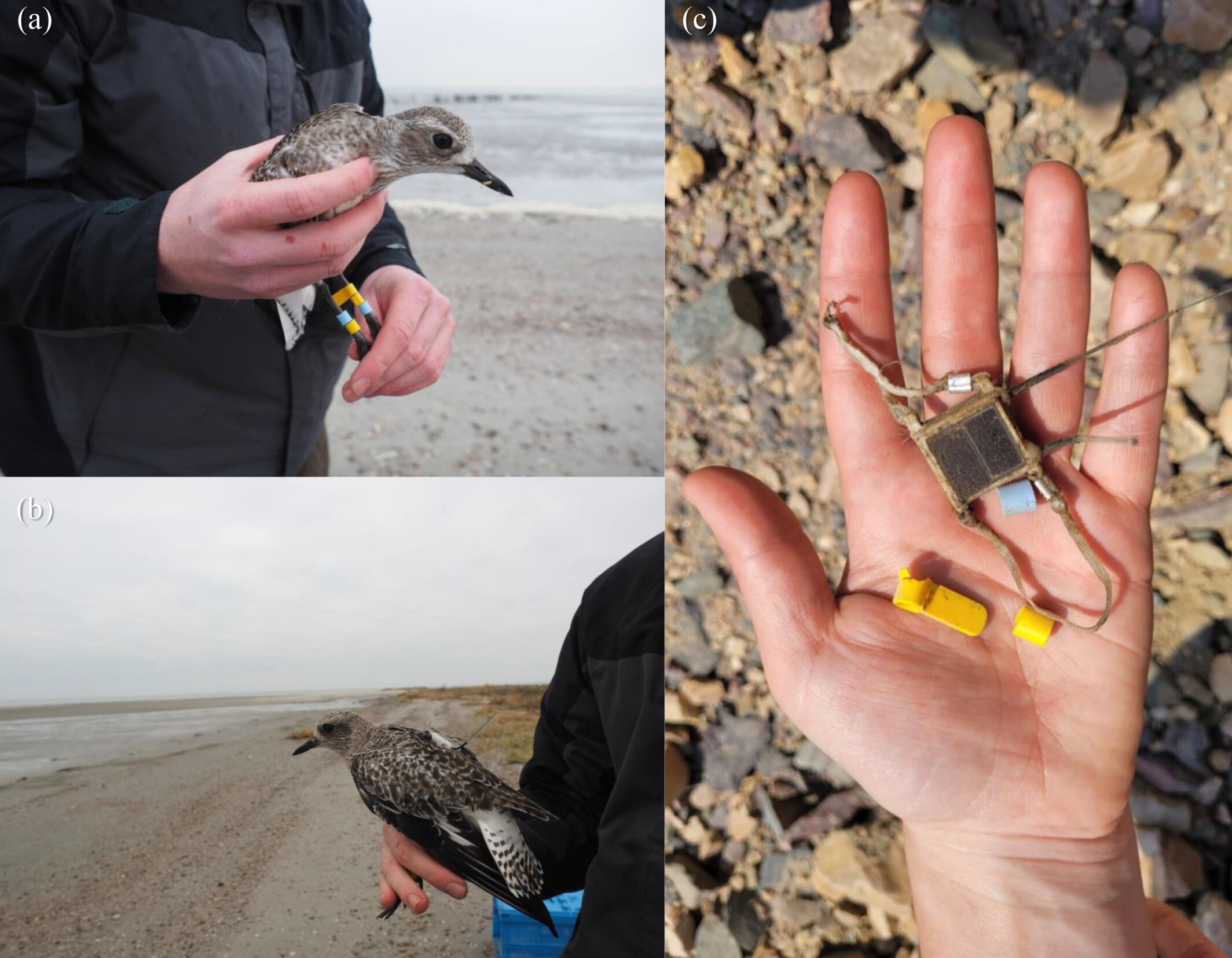Send word to Poirot, fetch Sherlock Holmes, and ring round the Thursday Murder Club – there’s been a death at 3,000 meters (9,800 feet) up, and only the very best team can solve it. So far, the evidence is pointing to one lead suspect… but let’s review the clues as they happened on the coast of the Wadden Sea in the Netherlands.
The victim is an Arctic-breeding gray plover (Pluvialis squatarola) that was fitted with a GPS tag by researchers studying their migration across northern Europe. The victim was one of eight of these plovers that were all tagged in January 2023. The team were studying the birds’ migration to try and work out why they migrate at such high altitudes; one theory was that it helps them avoid predation events. Typically these events occur when the birds have stopped to rest – some specialist predators have been known to take birds while they fly, but research into this is scarce.

The last known photographs of the gray plover fitted with the GPS tag.
The first big clue into the murder case came one evening as the birds were recorded flying. “At 21:58 local summer time on May 27 [2023] (25 min after sunset), one of the tagged birds suddenly stopped its migratory flight,” write the authors. The tags are fitted with accelerometers that measure when the birds are in flight or resting. The signal showed that the bird had made a very steep drop in altitude, and was then reported by a GPS signal to be at 2,882 meters (9,455 feet) above ground. These readings were very unusual to the team and stood out against the previous signals they had received.
“The first thing we noticed was a sudden change in direction,” Michiel Boom, lead author of the paper, told the New York Times.
The next signal the team received from the GPS came from a location around 8 kilometers away (4.97 miles) from the night’s previously recorded location. The plot thickened after the bird’s tag was recovered by the team, who also discovered the remains of the gray plover.
So what happened? Did the tag fall off? Did the gray plover fly into something or was it flown into? Well, some of those things might actually be true, since the remains of the victim’s body were found only a short distance away from a peregrine falcon (Falco peregrinus) nest.
Prior to the time of death, the tag recorded increased body acceleration around 15 minutes before the plummet was recorded. The authors suggest that the victim might have seen its attacker coming and attempted to fly faster to escape.
Peregrine falcons are the world’s fastest birds and can reach speeds of a whopping 320 kilometers per hour when diving (200 miles per hour), handy when feeding on a diet of other birds. With the evidence stacked up against it, the case’s lead suspect is the peregrine falcon, making this potentially the highest altitude instance of bird predation ever recorded.
The additional mystery still remains, however: why are these birds flying so high during their migrations?
Some suggest that it could be to avoid overheating, while the authors write that: “The application of high-resolution tracking now makes it possible to address questions on where, when, and up to which altitude birds risk predation during migratory flight, and for example whether flying at extreme altitudes during the day may be a successful adaptive strategy to avoid predators.”
“Our observation suggests that this may not always be the case, as increasing flight altitude up to 3,000 [meters] above ground is clearly not enough for migrants to avoid predation risk.”
The study is published in the journal Ecology.
Source Link: At 3,000 Meters, The World's Highest Known Case Of Bird Predation Has Been Recorded